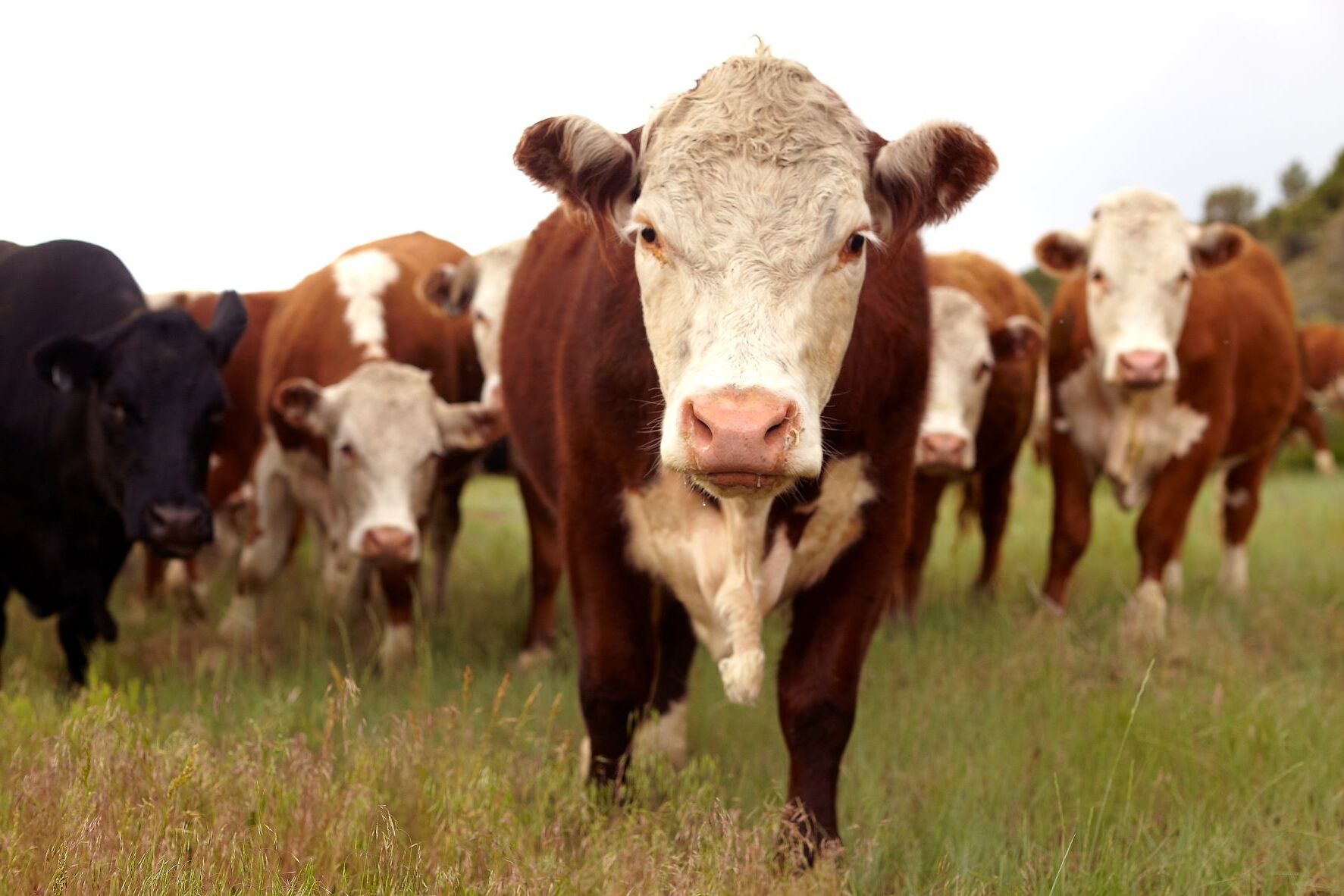
Ever wondered why Hereford cows are so popular among farmers and cattle enthusiasts? Well, you're about to find out! These gentle giants are not just a pretty face in the pasture; they're a powerhouse of efficiency and adaptability. With their distinctive red bodies and white faces, Hereford cows have become a symbol of quality in the beef industry worldwide. But what makes them stand out from the herd? From their remarkable hardiness to their friendly disposition, there's a lot to love about these cattle. So, buckle up as we dive into the world of Hereford cows, uncovering 20 fascinating facts that showcase why they're truly exceptional. Whether you're a seasoned farmer, a curious animal lover, or just someone who appreciates the simpler things in life, there's something here for everyone. Let's get moo-ving and discover what makes Hereford cows a breed apart!
Key Takeaways:
- Hereford cows, with their iconic red and white coloring, are prized for their adaptability, docile temperament, and high-quality beef production, making them a favorite in the global agricultural landscape.
- These historic cows play a vital role in sustainable agriculture, conservation efforts, and the future of ethically produced meat, showcasing their resilience and promising a bright future in farming.
Understanding Hereford Cows
Hereford cows, known for their distinctive red bodies and white faces, have a rich history and numerous qualities that set them apart from other cattle breeds. Originating from Herefordshire, England, in the 1700s, these cows have become a global presence, prized for both their hardy nature and their quality meat production.
-
Hereford cows were officially recognized as a breed in the 18th century, but their lineage traces back even further, showcasing their longstanding significance in agriculture.
-
These cows are particularly noted for their adaptability to various climates, thriving in countries across the world, from the chilly reaches of Canada to the warm expanses of Australia.
Physical Traits and Temperament
-
A mature Hereford cow typically weighs around 1,200 to 1,800 pounds, while bulls are larger, often reaching weights of 1,800 to 2,500 pounds. Their size contributes significantly to their value in the beef industry.
-
Besides their iconic red and white coloring, Herefords have a docile temperament, making them easier to handle and manage. This trait is highly valued by farmers and ranchers.
-
Their thick coats and skin allow them to tolerate a wide range of weather conditions, from extreme cold to intense heat, showcasing their versatility as a breed.
Reproduction and Lifespan
-
Hereford cows are known for their fertility and ease of calving, contributing to their popularity among breeders. They typically have a long breeding life, which can span over a decade.
-
The average lifespan of a Hereford cow ranges from 10 to 15 years, although with proper care, some can live even longer. Their longevity is a testament to their robustness.
Hereford Cows in Agriculture
-
In terms of agriculture, Herefords play a significant role in the meat production industry. Their efficient feed conversion rate and high-quality beef make them a favorite among beef producers.
-
These cows are also used in crossbreeding programs to improve the traits of other cattle breeds. Their genetics are highly sought after for enhancing hardiness and meat quality.
-
Hereford cattle are not just about beef; they are also raised for show. Their calm demeanor and striking appearance make them popular choices for cattle shows and fairs.
Conservation and Sustainability
-
With the rise of industrial farming, traditional breeds like the Hereford have faced challenges. However, conservation efforts are in place to maintain their genetic diversity and promote sustainable farming practices.
-
These cows play a role in sustainable agriculture due to their ability to graze efficiently, converting grass into high-quality beef with less environmental impact compared to some other breeds.
Global Presence
-
Today, Hereford cows are found in over 50 countries, demonstrating their global appeal. They are particularly prevalent in the United States, Canada, and Australia, where they contribute significantly to the beef industry.
-
International Hereford councils and associations work to promote the breed, ensuring its continued popularity and genetic improvement across the globe.
-
The adaptability of Hereford cows to various environments and farming practices has made them a symbol of resilience and sustainability in the agricultural world.
Health and Nutrition
-
Hereford cows require a balanced diet to maintain their health and productivity. This includes a mix of grass, hay, and sometimes grains, depending on the specific needs of the herd.
-
Regular veterinary care and vaccinations are crucial to prevent diseases and ensure the overall well-being of Hereford cattle, contributing to their longevity and productivity.
The Future of Hereford Cows
-
As the demand for sustainable and ethically produced meat grows, Hereford cows are well-positioned to meet these market needs. Their efficiency and adaptability make them an ideal choice for future farming models.
-
Advances in genetic research and breeding techniques continue to enhance the qualities of Hereford cattle, promising a bright future for this historic breed.
-
With a focus on conservation, sustainability, and ethical farming practices, Hereford cows will likely remain a staple in the global agricultural landscape for years to come.
A Final Peek at Hereford Cattle
Diving into the world of Hereford cows has been nothing short of enlightening. These creatures aren't just another breed; they're a testament to resilience, adaptability, and the rich tapestry of agricultural history. From their humble beginnings to becoming a global powerhouse in the beef industry, Hereford cattle have shown time and again why they're favored by farmers and ranchers. Their easy-going nature, coupled with their efficiency in converting feed into high-quality beef, makes them a standout choice. Not to forget, their distinctive white faces and red bodies have become iconic in pastures around the world. Whether you're a farmer looking to diversify your herd or simply a curious mind, the story of Hereford cattle is a fascinating chapter in the broader narrative of agriculture. They're more than just livestock; they're a symbol of enduring quality and agricultural evolution.
Frequently Asked Questions
Was this page helpful?
Our commitment to delivering trustworthy and engaging content is at the heart of what we do. Each fact on our site is contributed by real users like you, bringing a wealth of diverse insights and information. To ensure the highest standards of accuracy and reliability, our dedicated editors meticulously review each submission. This process guarantees that the facts we share are not only fascinating but also credible. Trust in our commitment to quality and authenticity as you explore and learn with us.


